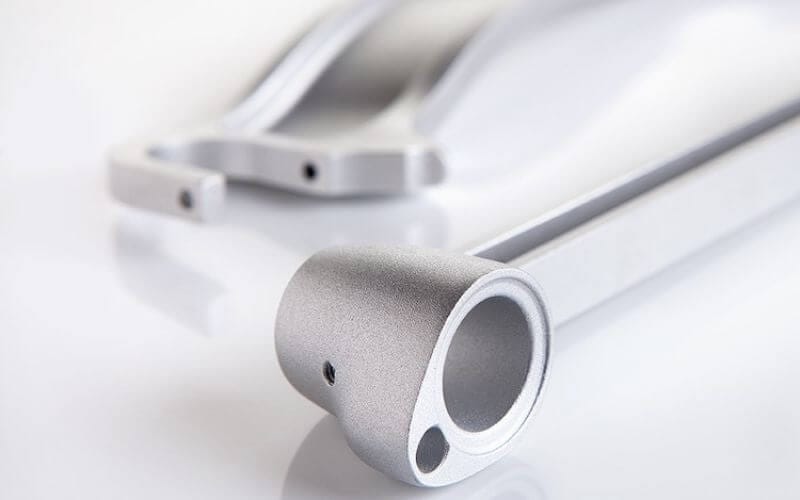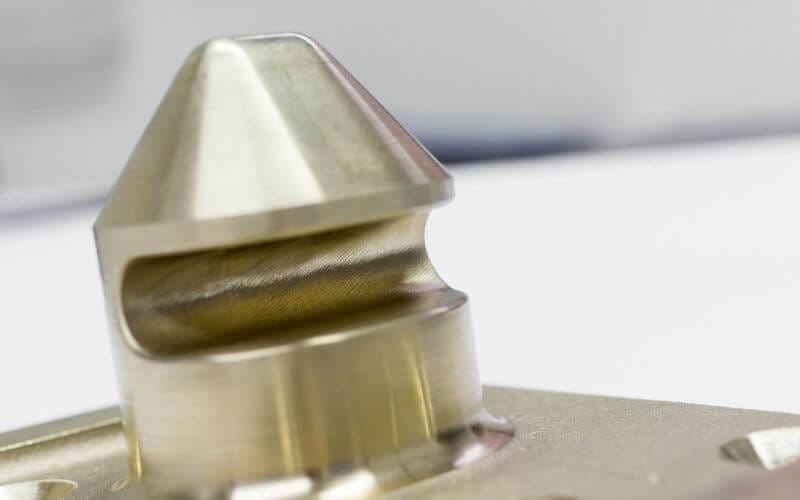Published - 22nd Sep 2025
Choosing the right material is a critical step in the investment casting process. The alloy you select influences everything from mechanical strength and corrosion resistance to surface finish and cost. This guide explores the most common metals used in investment casting and helps engineers and buyers select the best option for their specific application.

Material choice directly impacts the performance, durability and cost of the final component. Whether you’re designing for aerospace, energy, medical or industrial applications, selecting the right alloy ensures that your part meets functional requirements and long-term reliability.
Aerospace
Lightweight aluminium and heat-resistant superalloys such as Inconel are commonly used in aerospace applications, where weight reduction and extreme performance are key requirements.
Oil and Gas
Components in the Oil & Gas sectors often face highly corrosive and high-pressure environments. Duplex and super duplex stainless steels, along with nickel-base alloys, are commonly chosen for their strength and chemical resistance.
Medical
The medical industry prioritises hygiene and corrosion resistance. For example, alloys such as 316 stainless steel and cobalt-chrome are widely used in castings for the medical sector due to their durability and biocompatibility.
Explore our applications table for cast materials here
Material choice directly impacts the performance, durability and cost of the final component. Whether you’re designing for aerospace, energy, medical or industrial applications, selecting the right alloy ensures that your part meets functional requirements and long-term reliability.
This section highlights the core material categories most frequently requested by engineers and buyers. However, Investacast supports a much broader range of over 100 alloys, including duplex and super duplex stainless steels, tool steels, aluminium bronzes, copper-based alloys, cobalt-chrome medical-grade alloys, and custom specifications.
Each metal alloy group brings unique strengths and characteristics, depending on the performance, cost and environmental demands on your component. The following sections outline commonly used metals and alloys, how they are applied, and key selection considerations.
Why it’s used
Stainless steel offers an excellent balance of strength, durability and corrosion resistance. It performs reliably in both high and low temperatures, making it suitable for demanding sectors.
Typical grades
304, 316 and 17-4PH are the most commonly used stainless steels in investment casting.
Where it’s used
Stainless steel is ideal for medical devices, marine hardware, food processing equipment and pump housings, especially in hygiene-critical or corrosive environments.
Considerations
While stainless steel is strong and resistant to most chemicals, it can be more expensive than carbon steel, and may be harder to machine after casting.
Why it’s used
Carbon steel is widely chosen for its cost-effectiveness and strong mechanical performance. It’s suitable for structural and load-bearing components where corrosion resistance is not the primary concern.
Where it’s used
Typical uses include structural supports, automotive parts, agricultural machinery and general engineering components.
Benefits
Carbon steel offers good weldability, high toughness, and an economical solution for medium- to high-strength applications.
Considerations
Although strong and affordable, carbon steel is prone to rust and requires protective coatings or plating in corrosive environments.
Check our full casting metals tables for Carbon and low alloy steels here.
BS 3146-1:1974 Specification for steel investment castings including:
Why it’s used
Aluminium alloys are valued for their excellent strength-to-weight ratio, corrosion resistance, and suitability for intricate, thin-walled parts. They are often used where it is critical to reduce weight without sacrificing performance.
Common alloys
Investacast works with a broad range of aluminium alloys, including LM6, LM25, LM9, A356, 319, and 535. Each offers different mechanical and thermal properties to match specific design and operating requirements.
BS1490 is a British standard for aluminium and aluminium alloy castings. Each alloy in BS1490 has a separate designation, eg LM25, LM9. Investacast’s Aluminium Alloy Specification table includes nominal chemical analysis and typical applications.
See our aluminium alloy specification table
Where it’s used
Typical applications include aerospace and motorsport components, lightweight brackets and housings, and consumer electronics.
Considerations
Aluminium alloys are not suitable for high-temperature environments due to their lower melting point. Some grades may also require heat treatment to achieve the desired mechanical properties.
Why choose it: Lightweight, corrosion-resistant, and ideal for parts where weight savings are important.

Why it’s used
Copper and bronze alloys are valued for their thermal and electrical conductivity, as well as their natural resistance to wear and microbial growth. These properties make them suitable for both functional and decorative parts.
Where it’s used
Typical applications include electrical components, bearings, bushings, and architectural fittings—particularly where conductivity or visual finish is a priority.
Considerations
While copper and bronze offer excellent ductility and conductivity, they are generally softer than steel and can tarnish over time without surface treatments.
Exotic materials include nickel base superalloys and cobalt base superalloys are engineered to perform in the most extreme wear, temperature and corrosion conditions. They retain their strength and stability at high temperatures, making them a trusted choice in critical environments.
Why it’s used
Nickel-base superalloys such as Inconel and Hastelloy offer exceptional strength at temperatures up to 85% of their melting point. They are also highly resistant to corrosion, thanks to their protective oxide layers, making them ideal for aggressive operating environments.
Where it’s used
These alloys are typically found in turbine blades, exhaust systems, chemical processing components and marine hardware, where both heat and chemical resistance are essential. Read more about key properties and applications of nickel-base superalloys in investment casting.
BS 3146-2:1975 Specification for corrosion and heat resisting investment castings including:
Considerations
Cobalt- and nickel-base alloys are more expensive and complex to work with than conventional steels, but their performance under harsh conditions can justify the investment for mission-critical components, indispensable in extreme environments. Investment casting of exotic materials requires significant expertise.
Choosing the most suitable material depends on a range of practical and commercial factors. Here are some of the key considerations to discuss with your casting partner:
Operating temperature
Is the part required to perform in high-heat or cryogenic environments? Nickel-base superalloys and stainless steels offer excellent temperature resistance, while aluminium alloys are better suited to ambient conditions.
Mechanical load
Does the part need to withstand high tensile or fatigue stresses? Carbon steels and cobalt-base alloys are strong candidates for structural or load-bearing applications.
Corrosion environment
Will the part be exposed to salt, water, chemicals or acids? Materials like 316 stainless steel, duplex steels and nickel-base alloys are designed for high corrosion resistance.
Weight considerations
Is weight a concern for your design? Aerospace and motorsport components often use aluminium alloys to reduce overall mass without compromising on performance. Explore how investment casting can support lightweighting here.
Machinability
Will the component require post-cast machining or finishing? Some alloys are easier to machine than others, which may influence your selection and cost. Check whether your casting supplier has on-site precision machining services.
Cost and volume
Does your budget allow for high-performance alloys, or is cost efficiency a priority? Material choice also depends on the expected production volume and any requirements for tooling amortisation.
Working with an experienced casting partner such as Investacast can help you navigate these decisions with confidence, ensuring that your chosen alloy supports both technical performance and commercial goals.
At Investacast, we support customers with more than just casting. We provide:
We also offer the extensive support of Expromet Technologies Group, providing a wealth of metal-forming expertise and options for precision engineered solutions through Haworth Castings and Metaltech Precision. Expromet Certifications include:
Contact our engineering team today.
If you have a project, talk to our experienced sales team
Contact us